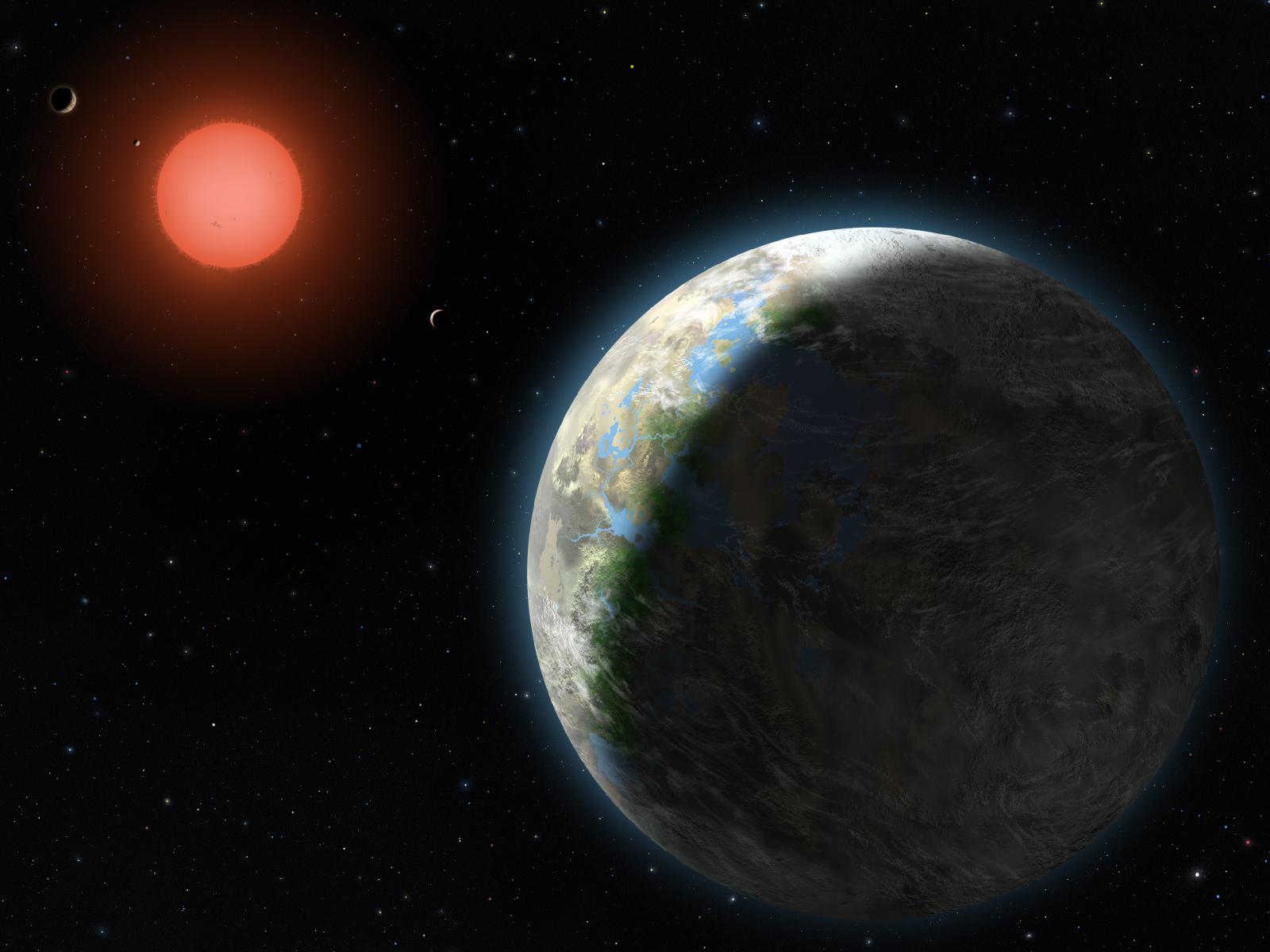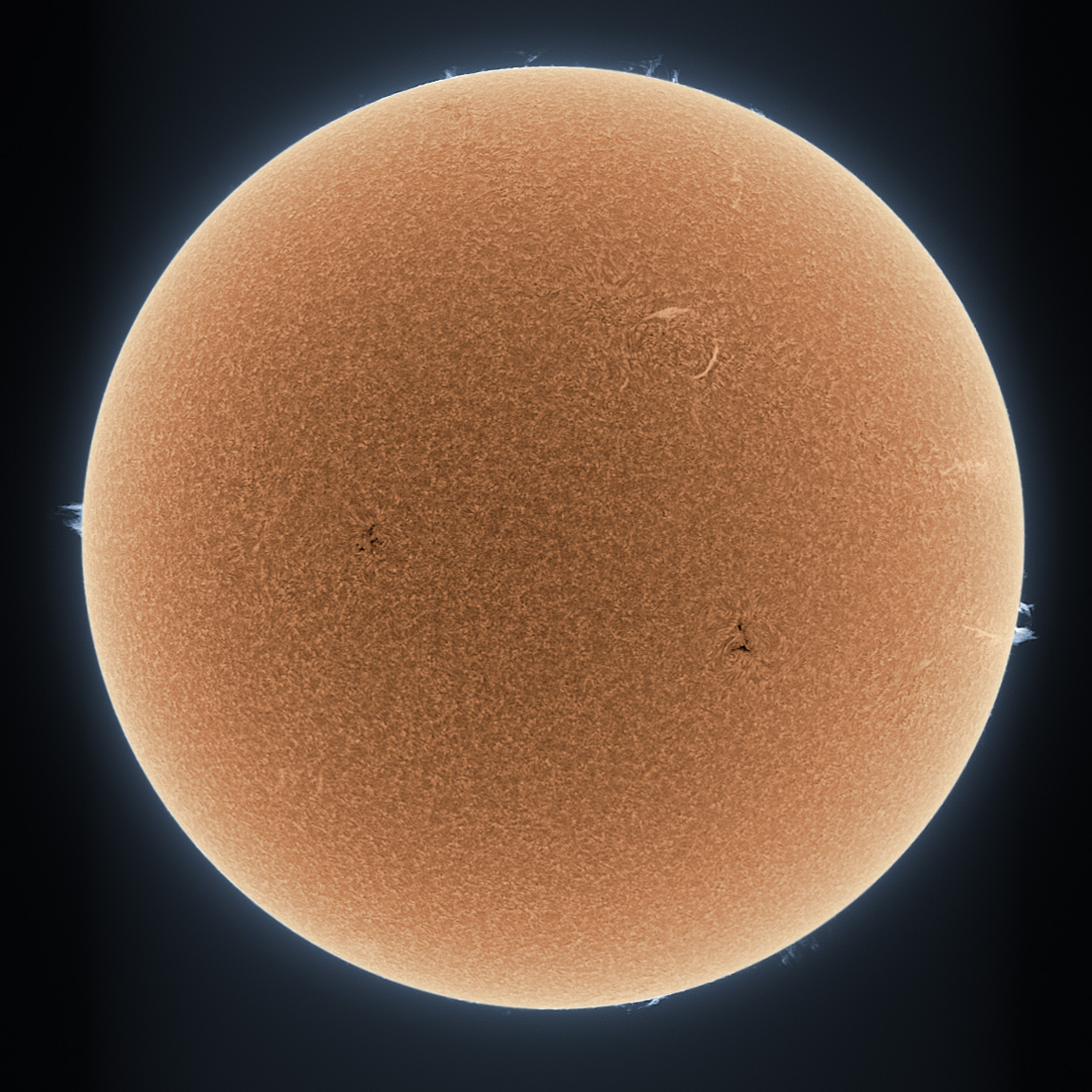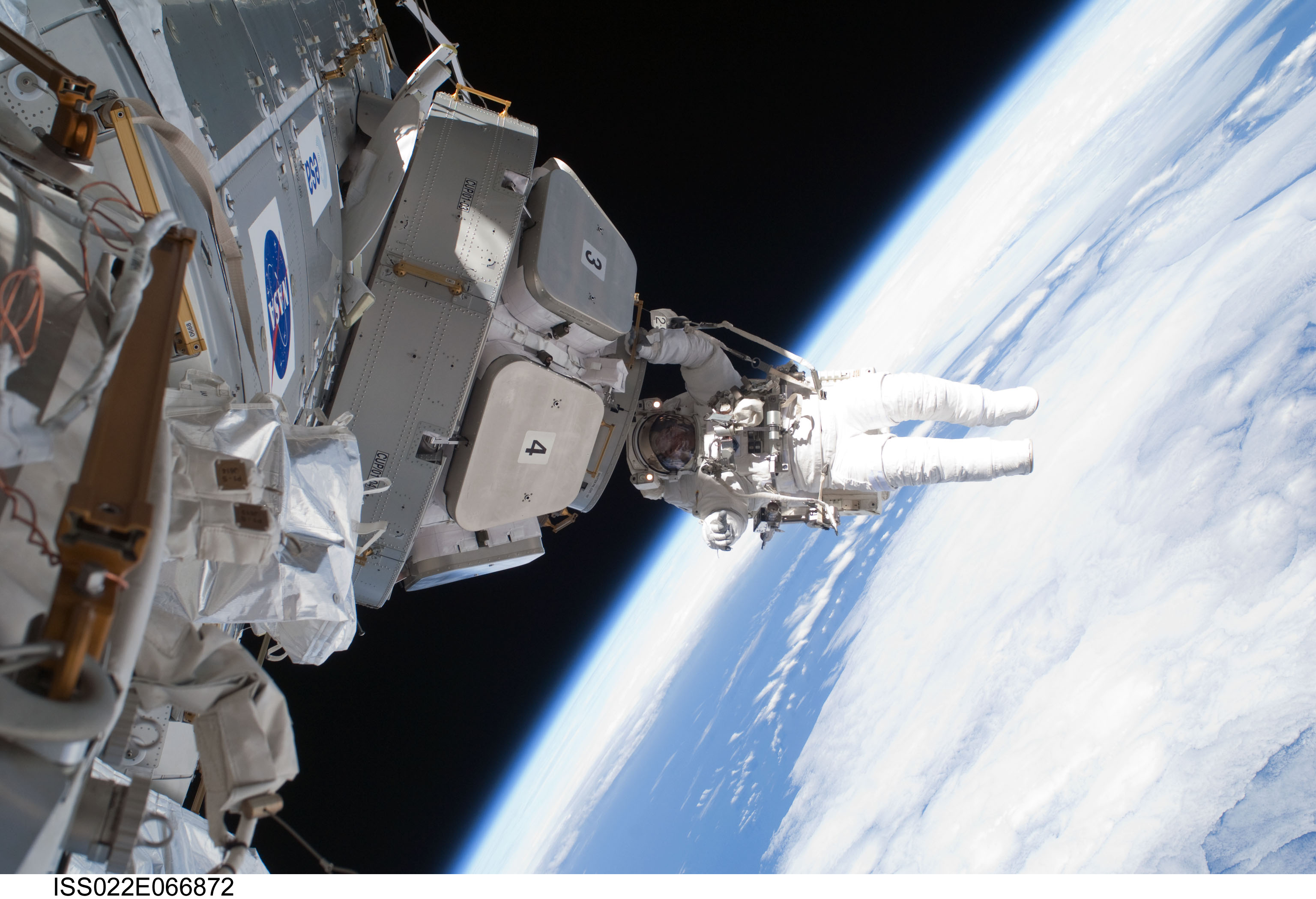Astrophotography time-lapse
Utah Night Time-lapse II - A compilation of time-lapse clips taken in Utah during 2010 and 2011 using many different cameras, including the Canon EOS 5D Mark II, Canon EOS 7D, Canon EOS 60D, Canon EOS 50D, Canon EOS 40D and Nikon D3s. Some clips were taken using various on-lens filters for added effect. All cameras are Astroconverted cameras. Images were compiled into time lapse using Adobe Photoshop CS5 and Adobe Premiere Pro CS5.
Zarmina's World
A mere 20 light-years away in the constellation Libra, red dwarf star Gliese 581 has received much scrutiny by astronomers in recent years. Earthbound telescopes had detected the signatures of multiple planets orbiting the cool sun, two at least close to the system's habitable zone -- the region where an Earth-like planet can have liquid water on its surface. Now a team headed by Steven Vogt (UCO Lick), and Paul Butler (DTM Carnagie Inst.) has announced the detection of another planet, this one squarely in the system's habitable zone. Based on 11 years of data, their work offers a very compelling case for the first potentially habitable planet found around a very nearby star. Shown in this artist's illustration of the inner part of the exoplanetary system, the planet is designated Gliese 581g, but Vogt's more personal name is Zarmina's World, after his wife. The best fit to the data indicates the planet has a circular 37 day orbit, an orbital radius of only 0.15 AU, and a mass 3.1 times the Earth's. Modeling includes estimates of a planet radius of 1.5, and gravity at the planet's surface of 1.1 to 1.7 in Earth units. Finding a habitable planet so close by suggests there are many others in our Milky Way galaxy.
2010 June 09: Even a quiet Sun can be a busy place. And over the deep Solar Minimum of the past few years, our Sun has been unusually quiet. The above image, taken last week in a single color of light called Hydrogen Alpha and then false colored, records a great amount of detail of the simmering surface of our parent star. The gradual brightening towards the Sun's edge in this color-inverted image, called limb darkening, is caused by increased absorption of relatively cool solar gas. Just over the Sun's edges, several prominences are visible, while two prominences on the Sun's face are seen as light streaks just above and right of the image center. Two particularly active areas of the Sun are marked by dark plages. In contrast to recent quiet times, our Sun is moving toward Solar Maximum, and for years will likely appear much more active.
The International Space Station
The International Space Station (ISS) is the largest human-made object ever to orbit the Earth. The ISS is so large that it can be seen drifting overhead with the unaided eye, and is frequently imaged from the ground in picturesque fashion. Last month, the station was visited again by space shuttle, which resupplied the station and added a new module. The ISS is currently operated by the Expedition 22 crew, now consisting five astronauts including two supplied by USA's NASA, two by Russia's RKA, and one by Japan's JAXA. After departing the ISS, the crew of the space shuttle Endeavour captured the above spectacular vista of the orbiting space city high above the clouds, waters, and lands of Earth. Visible components include modules, trusses, and expansive solar arrays that gather sunlight that is turned into needed electricity.
Astronaut Installs Panoramic Space Window
This space job was almost complete. Floating just below the International Space Station, astronaut Nicholas Patrick put some finishing touches on the newly installed cupola space windows last week. Patrick was a mission specialist onboard the recently completed space shuttle Endeavor's STS-130 mission to the ISS. Pictured, Patrick floats near the outermost of seven windows on the new cupola of the just-installed Tranquility module. Patrick hovers about 340 kilometers over the Earth's surface, well in front of the blue sky, blue water, and white clouds pictured far in the background. In the above image, covers on windows three and four were in place and clearly labelled. Images from inside the ISS's new panoramic cupola are now available.




